How to build a website like Styleseat
Styleseat brings beauty and wellness professionals and clients seeking their services together. In this guide, you’ll see how designing, building, and scaling your own marketplace like Styleseat is possible with the right approach.
When Styleseat founder Melody McCloskey set out to find the perfect stylist for her hair and dye needs, she didn’t know she would be discovering a way to take salon owners and stylists into the digital age.
Not knowing a lot about the beauty industry herself, McCloskey usually DIY’d her hair dyeing process. But when she actually went out into the salons of San Francisco, she quickly realized it was just as hard for the salon owners to advertise and manage their businesses as it was for her to find the perfect stylist for her hair type.
And so Styleseat was born in 2011. McCloskey founded the marketplace with the help of co-founder Dan Levine in San Francisco. Since then, Styleseat has become a home for independent beauty professionals. The online booking destination allows clients to quickly find and book their grooming and beauty services. Its unique offering has made it one of the top destinations for bookings in the beauty and wellness niche, serving over 16,000 cities across America. Beauty in the US is a trillion-dollar industry—with an expected revenue of $100 billion in 2024 alone.
Styleseat went from not raising any seed funding in its first few years to raising over $40 million from investors like Ashton Kutcher and other big names. While it’s extremely impressive how Styleseat has gone from zero to hero, with billions in bookings—it makes sense why the idea has scaled so well. The marketplace model, in general, is known to scale extremely well.
Today’s marketplace founder has a further benefit. It has also become possible to test out marketplace concepts quickly with the advancements in technology that are now readily available (Like ours at Sharetribe).
However, building a successful marketplace isn’t easy. A marketplace like Styleseat needs to serve two audiences: the customers and the beauty industry professionals. You need a convincing value proposition for both these groups from day one.
In this article, I’ll take you through the best practices for launching a marketplace that caters to both the buyer and seller side. Start by creating the most essential parts and learning as you grow.
But first, how does a Styleseat-style website work for buyers and vendors?
The success of Styleseat can be traced back to the wide range of services offered, and available professionals on the platform catering to various beauty and wellness needs. This availability has attracted a diverse customer base for Styleseat’s sellers—leading to Styleseat’s growth.
The ease of booking, Styleseat’s review and rating system, and smart marketing options have also contributed to this marketplace’s popularity. These tools provide great value, especially to independent and budding beauty professionals and small businesses.
Once a client visits Styleseat’s platform, they can search for beauty and wellness services like hairstyling and skincare. The marketplace allows clients (buyers) to view Beauty Pros’ profiles and make a selection based on location, availability, services offered, etc.
After a vendor is selected, buyers can then book for a specific date on the platform. At this point, Styleseat will send constant reminders leading up to the appointment.
Clients can pay through the Styleseat platform after the services have been provided and leave reviews for the seller to help other buyers find the best services.
On the vendors’ side (the stylists and salon owners), they first create a profile with necessary information like location, availability, pricing, and services listed.
After the profile is created, Styleseat simplifies all other processes of managing schedules, communicating with clients, and payment processing for vendors. Sellers can manage their business finances, payments, and tips, while exchanging information with clients, and also accept or decline requests based on availability. All through the Styleseat platform or app.
Finally, vendors get reviews that impact their reputation and visibility in this marketplace.
So Styleseat acts as a middleman for streamlining the process of booking beauty services for clients, while providing stylists and beauty professionals with a platform that helps them showcase their skills, handle bookings, and grow their user base.
Styleseat primarily uses a mix of two of the more popular and straightforward marketplace business model approaches to generate revenue. That is a commission-based approach (for both sellers and buyers) and the subscription model (for sellers).
StyleSeat users have two subscription options: a freemium plan and a $35 monthly subscription to use the platform. Styleseat also offers a free 30-day trial before vendors need to make any financial commitments.
On top of the subscription, sellers pay a credit card processing fee (a slightly lowered fee for users of the paid plan).
Styleseat also offers some additional features with commission pricing. For example, their New Client Connection tool charges between 25% and 35%(up to $50) on payments collected from new clients.
Styleseat also charges a commission, called booking fee, from the buyers. The fee is between $1–$10.
The model has worked well for Styleseat, with the marketplace’s estimated revenue at $30 million. This seems fair since the platform has generated over $10.6 billion in revenue for beauty professionals. Talk about a win-win!
- Vagaro: Vagaro is a wellness marketplace based in California that provides users with booking, payroll, and calendar management services. Clients can find spa, salon, or fitness professionals on this platform.
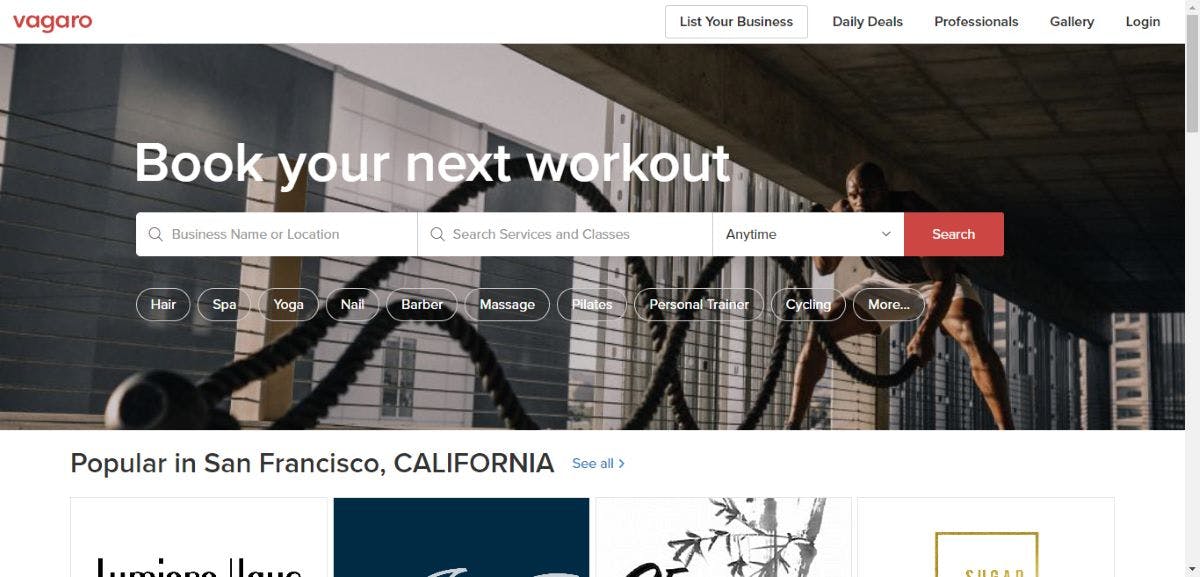
2. Mindbody: Mindbody is another top marketplace within the beauty and fitness industry. The platform offers anything from employee management to marketing and booking. Mindbody acquired the popular appointment-scheduling software Booker back in 2018.
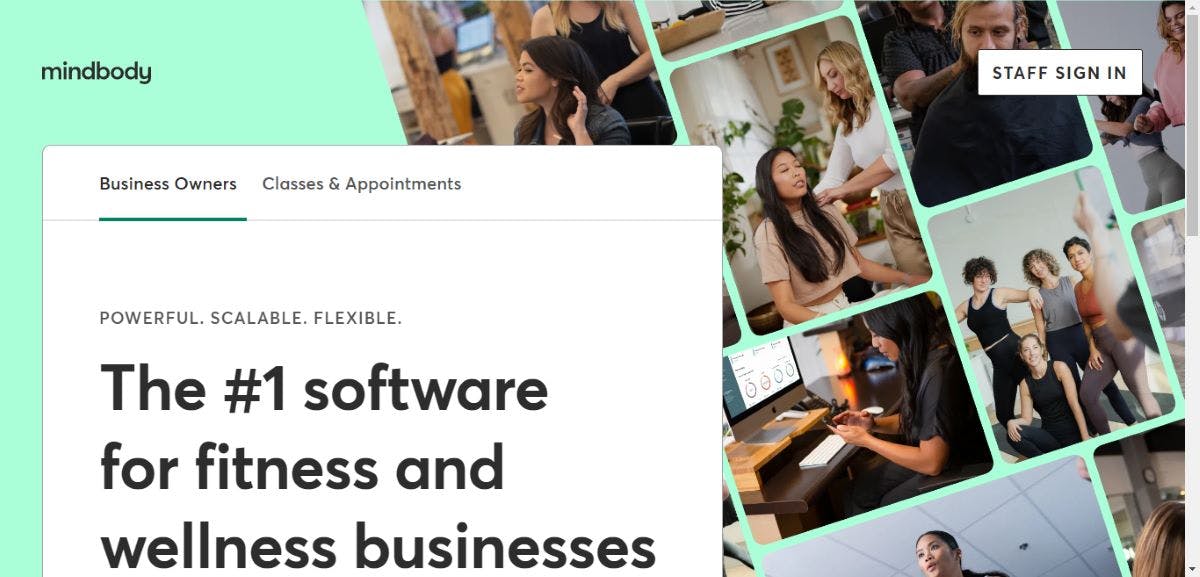
3. Booksy: Booksy is an appointment booking solution that caters to the beauty industry as well. In Booksy’s case, the focus is making hair, grooming, and skin care services available for users. The platform acquired Genbook in 2021 and has since offered all of Genbook’s most loved features.
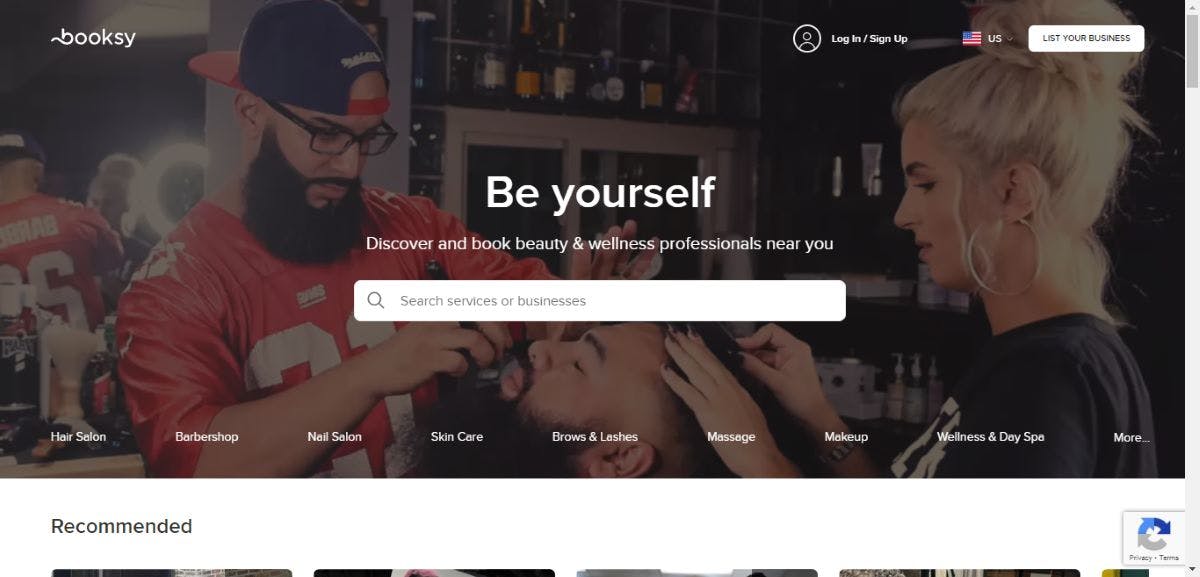
4. Schedulicity: This marketplace allows users to find fitness, salons, and health professionals near them. It also gives these wellness professionals increased visibility through their platform and app for potential audiences.
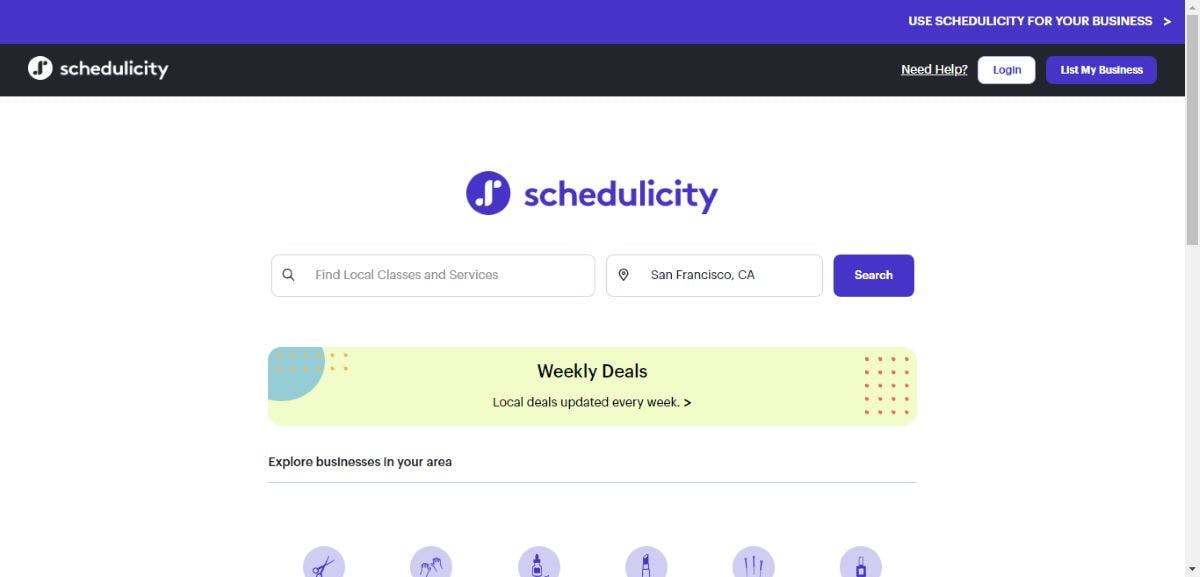
5. GlossGenius: GlossGenius’ all-in-one platform helps professionals in the wellness industry drive bookings while managing payments and POS solutions. Clients can find hairdressers, barbers, and spa professionals with this platform.
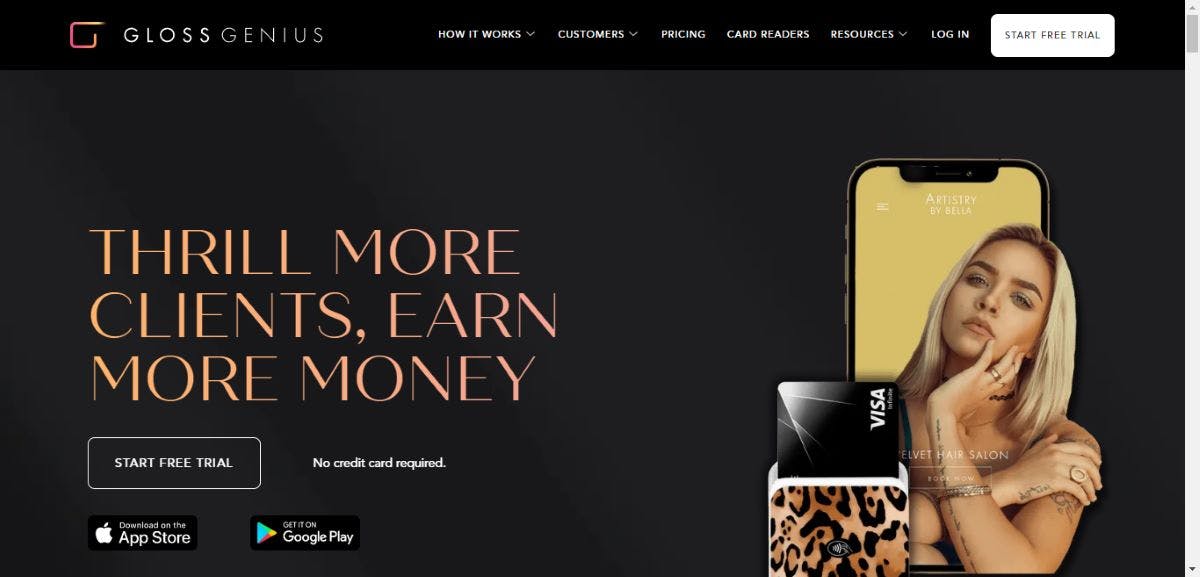
6. Timely: Timely is an exclusive salon and spa marketplace that lets salon owners and spa professionals manage their bookings with an easy-to-use online booking system.
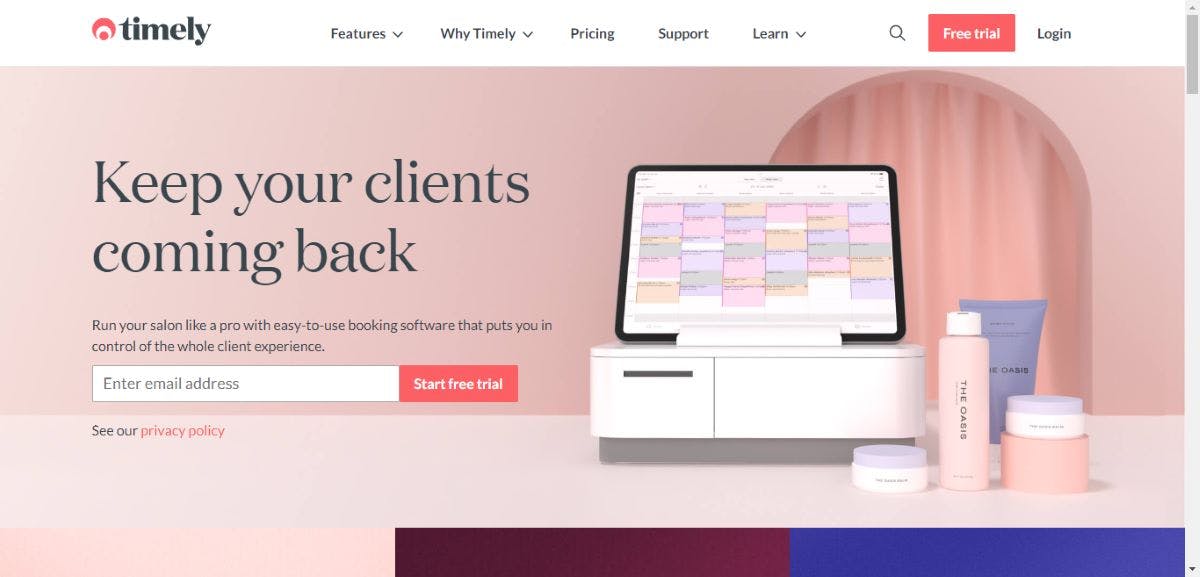
7. Fresha: Fresha prides itself in being a relatively “free” solution for hair stylists and clients to book hair appointments and handle payment processing.
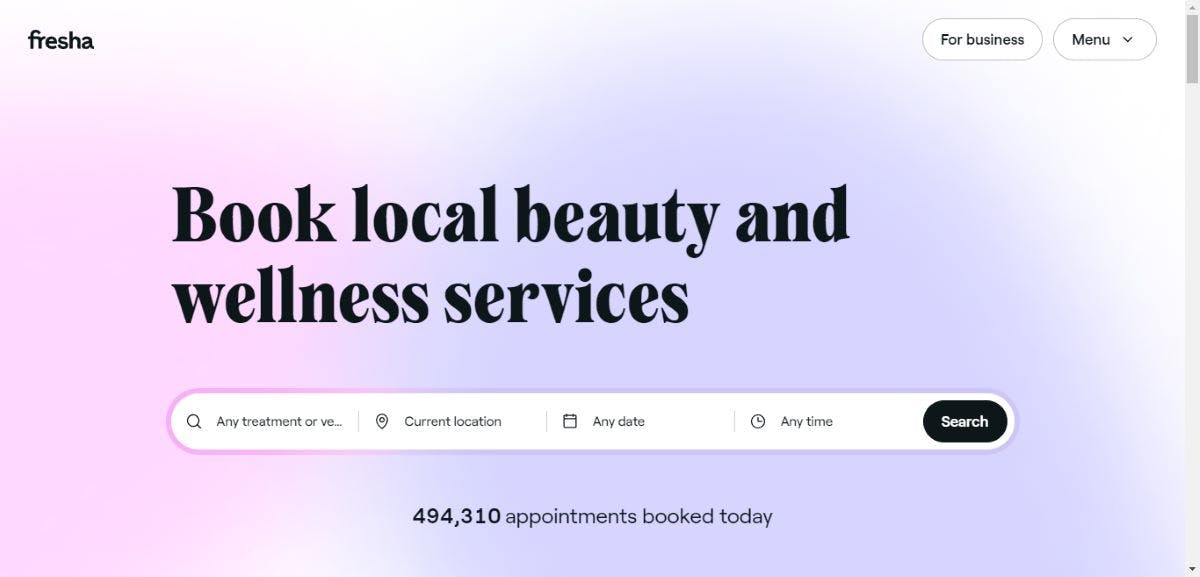
You don’t need to try and take on Styleseat head-to-head to find your place in the massive beauty market. The finer margins will work here: differentiation is often what helps small marketplace to compete against the big players. This means focusing on a niche and and providing it the kind of value your big competitor cannot will be the keys to success.
Here’s how to do it:
- Validate your assumptions: The first step to finding out how feasible your marketplace idea is is validating a few core assumptions. If you don’t, there’s a risk of building a desert app: a platform that looks terrific and works wonderfully but that no user wants because it doesn’t solve an important problem for them. By mapping out vital segments of your marketplace idea, like the problems your audience has and the solution you’re suggesting, you can approach validating each assumption you’ve made.
- Build your Minimum Viable Product: After you have validated your assumptions, you can build the first version of your marketplace with only the essential parts for now. The goal here is to attract early adopters with the core functionality of your marketplace. Your MVP (Minimum Viable Product) makes it easy to learn from what the market wants directly and handle any early bugs or issues with your idea or business model.
- Build your initial user base: This stage is crucial. It’s easy to get lost in wanting to onboard as many users as possible onto your platform and burn thousands in advertising. But in the early stages, volume is less important than finding the right balance of sellers and buyers. To solve this equation, focus on just one side of the marketplace audience at the start. For most marketplaces, it’s best to start with building supply. Focusing on vendors first (stylists and beauty professionals) will ensure any new user on the client side can find the services they’re looking for on your platform.
- Find the right growth strategies: The right growth channels for your marketplace will often not be the first channel you try. To find proper growth channels suited to you, don’t be afraid of testing and retesting till you find what works. Marketplace models are different from conventional businesses, so don’t worry about how fast you’re growing for now. In fact, growing a marketplace too fast can be a bad thing if it prevents you from learning and iterating. So take your time so you grow and improve your marketplace for the long haul.
- Learn and iterate as you grow: Now that you’ve created your marketplace and started seeing growth, the job is just getting started. Maintaining a healthy commitment to improving what you’ve built will help separate you from the rest and give your users more value. By tracking user behavior and identifying bottlenecks or other fundamental issues early, you can use learning from your audience to understand what functionality they value the most.
There are many approaches to creating your Styleseat-style website, with trade-offs between the pros and cons for each one. Here’s a brief description of each, with links to learn more.
You can:
- Build a marketplace from scratch: Building a marketplace from scratch gets you a highly customizable platform where functionality can be freely improved upon or replaced since you have the source code. But, even though you can get tailor-made solutions that bring all the ideas you have in mind to life, developing your marketplace from scratch is extremely time-consuming (and very expensive if you need to outsource development). You have to know how all the front-end and back-end code works for all aspects of software development, and even if you do, you’re looking at a very long and sometimes tedious process where you need to build a lot of rather basic features from scratch. And if you hire a team to do it, you’re looking at a significant dent (likely at least $50K) in your budget.
- Build a marketplace with WordPress: By building a marketplace on top of WordPress plugins and widgets, you get to greatly reduce the financial burden and skill requirements of building from scratch. Nonetheless, working with various plugins to build and maintain a platform can be more time-consuming than one would think. Also, building any sort of custom feature will still require in-depth knowledge of multiple plugins and the WordPress architecture.
- Build a marketplace on top of open-source software: Marketplace open-source software already comes with some of the basic features a website like Styleseat would need, which can help you speed up launch day. However, using open-source software still requires monthly financial commitments for hosting and maintaining expenses. Sufficient time and technical skills are also big requirements for building on top of open-source software, where the developer experience may not be optimally designed for customization.
- Build with a combination of no-code tools: Using a combination of no-code tools to build your marketplace gives you the increased customizability of different tools made for specific marketplace functionality. So you can still feel like a maker without having to be a professional developer or learn code. This method allows you to create features to the extent of your understanding of various no-code tools, but this means you need an extensive understanding of all essential marketplace functionality. No-code tools alone also won’t suffice at scale, so at some point, you’ll need to rebuild your platform.
- Build with a dedicated no-code SaaS tool: This method is by far the quickest to get your marketplace idea out there and validate concepts on real users. Building with dedicated marketplace no-code SaaS tools doesn’t require you to have any knowledge of code to launch. Most base needs are taken care of; essential marketplace features, payments, security issues, hosting, and site maintenance. Updates are also often part of your subscription so it's easy to keep up with user demands. However, software providers of SaaS tools serve diverse use cases all at once, so launching with all the features you want may be difficult.
- Develop a marketplace on top of an API-based marketplace SaaS tool: With this method, you get the customization options building from scratch offers, while still getting the speed of using out-of-the-box marketplace features. The only “but” is that you still need more technical knowledge for using API-based tools than you would need if you were only using no-code tools. However, with the right tool, you end up still saving up to 90% of the time and cost compared to building from scratch.
Your approach will depend on what cons you’re ready to deal with and the benefits that matter most to you. Whether that’s a quicker time to launch or more tailor-made features, finding the balance between what you’re comfortable with and what will accelerate your marketplace launch is crucial.
At Sharetribe, we’ve designed our marketplace solutions to save you the trouble of having to choose. You can launch your unique platform very quickly and affordably – zero coding skills needed. Essential marketplace features, hosting, security, and maintenance are included, so you can focus on your business and rest assured that the heavy lifting is taken care of.
With Sharetribe, it’s also easy to build additional functionality on top of the no-code features whenever you’re ready to scale your marketplace. You can build a mobile app to capture more users, change workflows to streamline the user experience on your platform, design unique features, and more. If you don’t have developers on your team, you can hire help from our global pool of Sharetribe-vetted developers.
Check out our How to start an online marketplace guide to learn more about the steps involved in building a working marketplace.
Styleseat is a service marketplace with its core value being its booking and scheduling features, chatting, and payment processing. Sharetribe-powered marketplaces also handle booking and additional features on one platform. Some examples are:
Probuddy is an innovative sports and fitness marketplace that allows users to book online or in-person classes, training facilities, and a host of other services. Users can even book entire venues through Probuddy’s dedicated platforms.
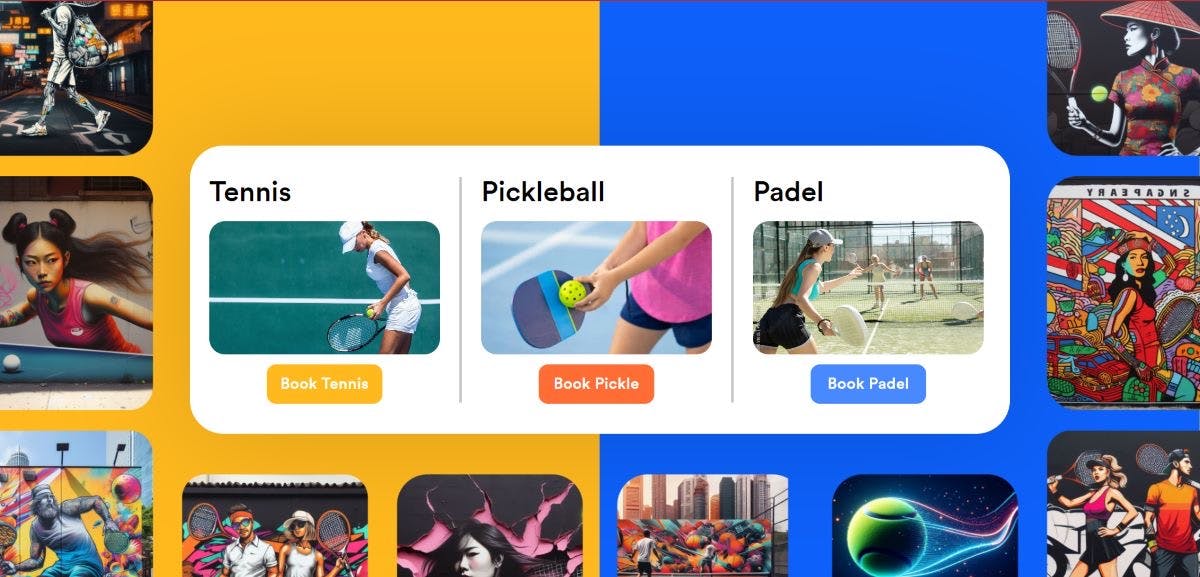
PictureHum gives people looking for professional-taken photos the chance to find a photographer near them. With its straightforward pricing style, users get to book a session for just about any picture type.
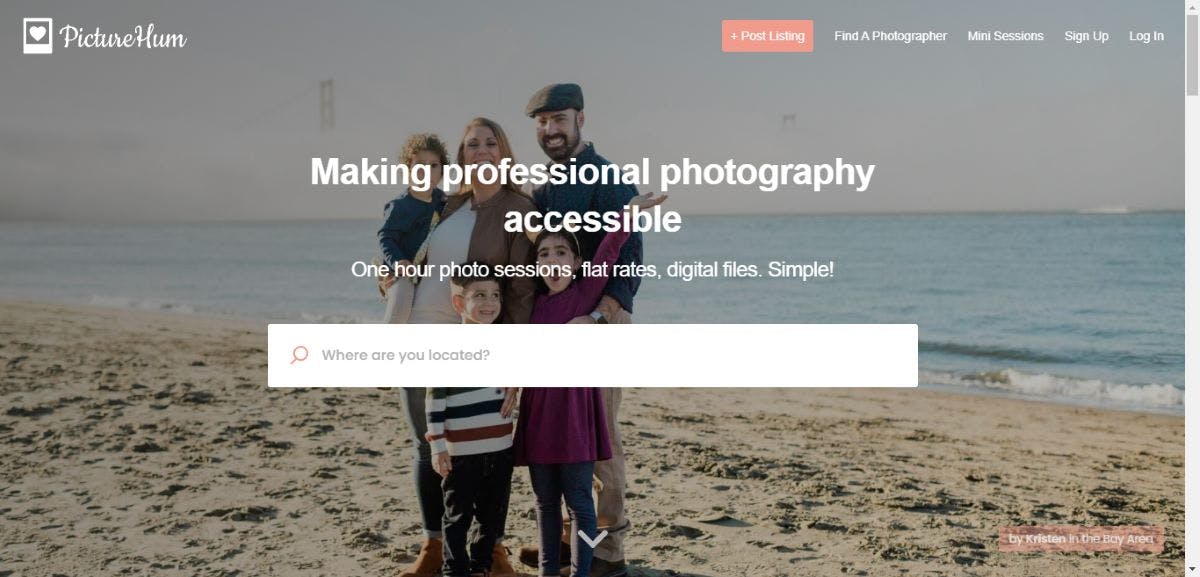
Queerhealers is a marketplace where users can find practitioners near them and book sessions. From massage therapists to herbalists and astrologers, clients can find who they need here. The platform also offers payment and review-handling features.

Best of luck with your marketplace and we’ll see you soon!
- How to build a website like Airbnb
- How to build a service marketplace
- How to build a two-sided marketplace
- How to build a B2B marketplace
- How to build a peer-to-peer (P2P) marketplace
- How to create a multi-vendor marketplace
Start your 14-day free trial
Create a marketplace today!
- Launch quickly, without coding
- Extend infinitely
- Scale to any size
No credit card required
